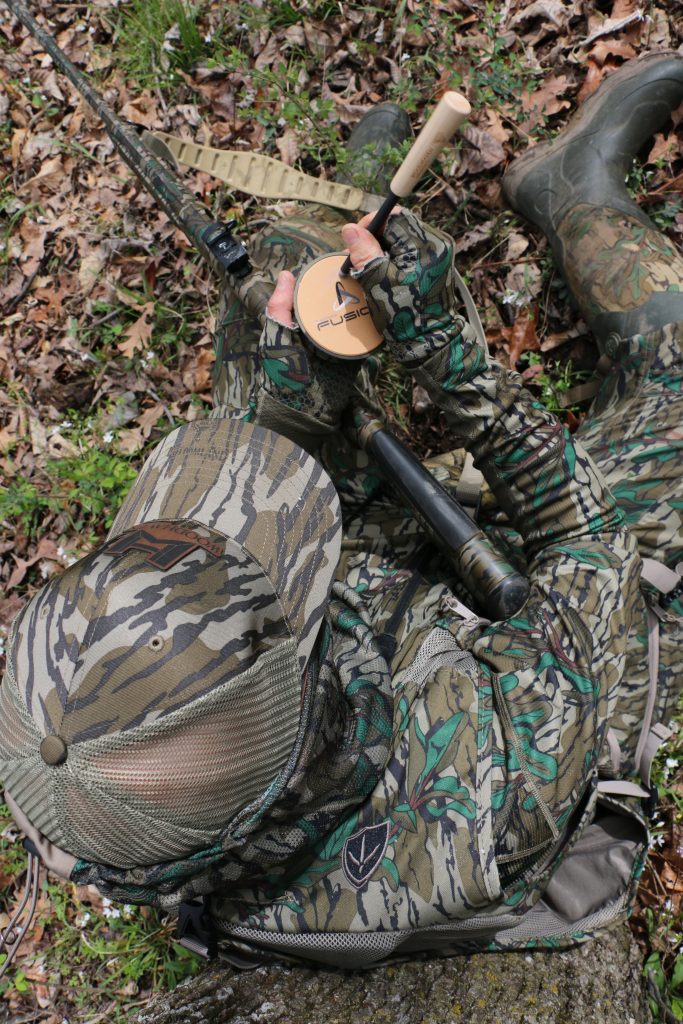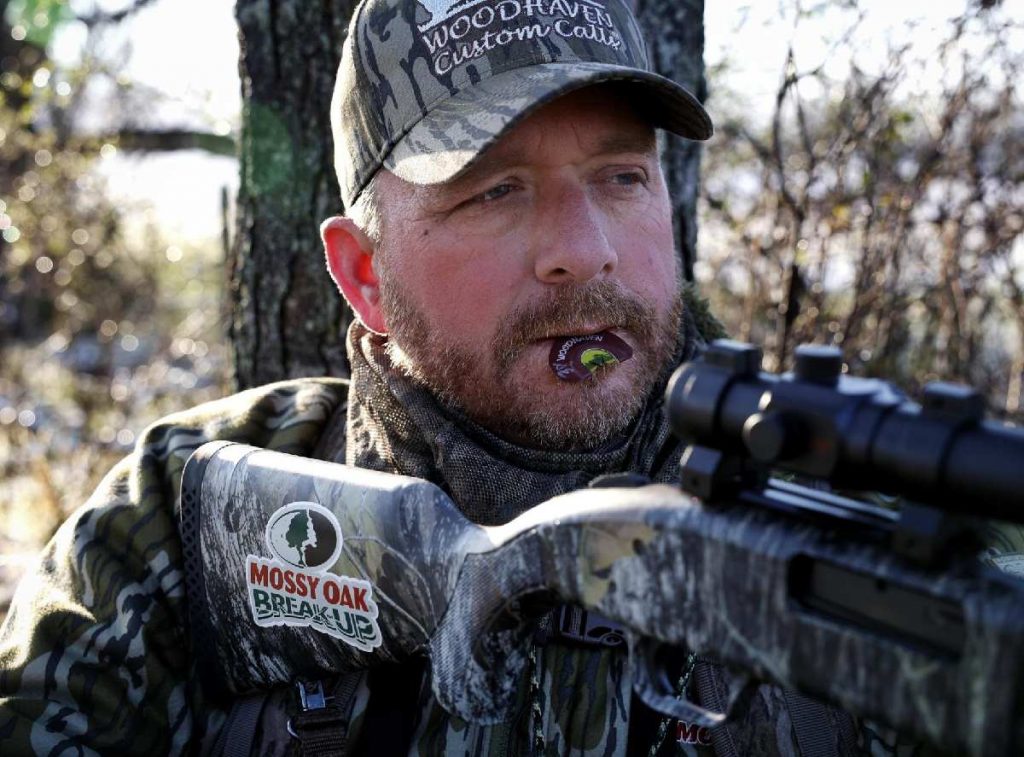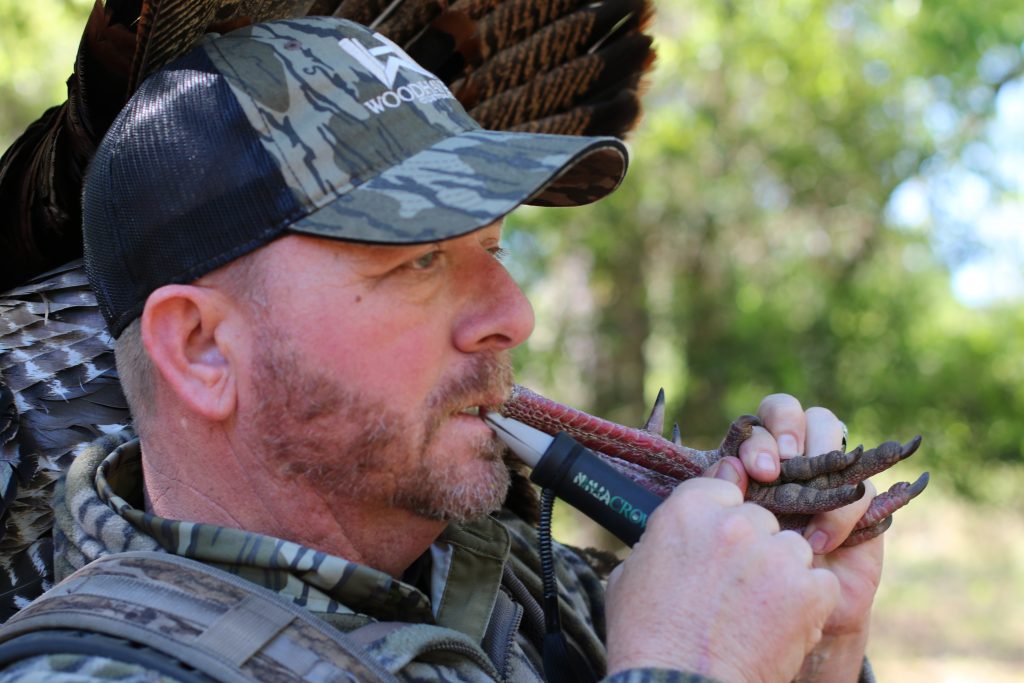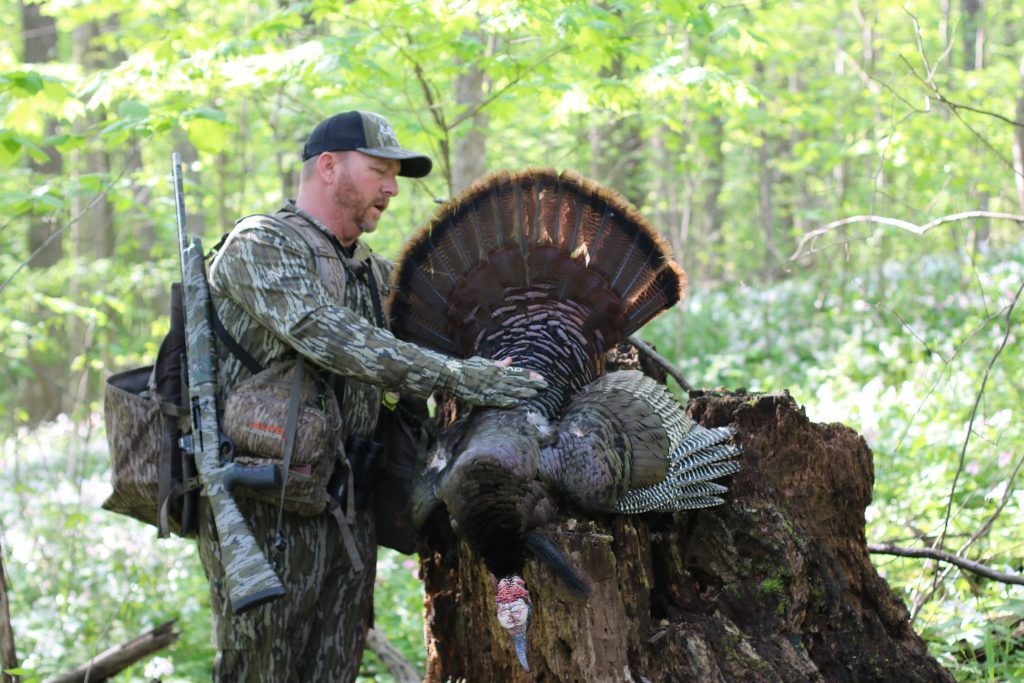Mastering the Flydown Cackle
Misunderstood and sometimes difficult to learn, this classic call serves great purpose in the turkey woods.

Turkeys probably don’t think about their fly-down cackle when they pitch off the limb. It just comes naturally. Hunters, however, sometimes find the cackle is tricky to master and use correctly in the woods. But that’s where practice and technique can help.
The fly-down cackle is commonly defined as three to 10 loud, staccato, irregularly spaced notes, which start quickly and slow down progressively. As the name implies, turkeys make the call when they fly down from the roost. That sounds simple enough, but callers often run into timing problems with the cackle. Further, because they must utter sounds in quick succession, the call can sometimes run together instead of sounding like distinct notes.
“When giving the fly-down cackle, I use two thoughts to keep the notes distinctly separate,” said Scott Ellis, a champion caller and Woodhaven Custom Calls pro-staffer. “I like to use the number system. Think of No. 1 being the first note of the cackle, and then sequentially go to Nos. 2, 3, 4, 5, 6, 7 and 8, with increasing spacing between each consecutive note. Also, I envision as the hen flies down each cackle note being emitted matches the hen’s wings beating against her body. Each slap of the wing is a note. She beats her wings quickly as she jumps off the limb, and then they slow down as she descends. This matches the number sequence noted.”
Ellis said rhythm is more important than speed when cackling.
“As you’re learning to make the call, work on slow, distinct notes,” he said. “Then as you perform it efficiently, you can start to pick up speed to add more realism and excitement.”
Air control when cackling on a mouth call can also be an issue. Again, polished technique makes a big difference.

“The best way to describe how to control the air when cackling is to engage your diaphragm and use it to project the air,” Ellis said. “Then use your tongue as a valve to start and stop the note. The simplest way to describe this is to breathe the word kick for each note, and again utilize your diaphragm to give it that extra push. This will allow you to capture the small puff of air that will create the sharp cutt note used in the cackle.”

The fly-down cackle can be an effective call during early morning roost hunts, but Ellis said you must know when to use it.
“I think the biggest mistake when hunters use the fly-down cackle is giving the call too early, meaning when it’s just too dark for birds to realistically fly down, and continuing to call to the tom after you give your fly-down — meaning when the gobbler is still on the limb,” he said.
During fly-down setups, Ellis first emphasizes making contact with a gobbler and uses the fly-down cackle as part of a larger scenario.
“I start with a few bubble clucks — drippy, soft, watery sounding clucks — along with a few muted, soft tree yelps, being sure to not overcall to a tom on the limb,” he said. “When it gets to be fly-down light, it’s time to simulate that the hen is flying down. I start with some soft yelps, and then build in volume and speed up the cadence as if the hen is getting excited and ready to fly down. From there, I start fast clucking and then explode into the cackle.”

After that, Ellis doesn’t call until he knows for certain that the gobbler has flown down, unless hens are roosted with the longbeard. Hopefully by then, his early morning scenario, including the fly-down cackle, has painted a realistic picture to lure the bird within range.
Check out this live hen’s fly-down cackle, courtesy of Claycomb Outdoors: https://www.youtube.com/watch?v=noB7hmR0IxY